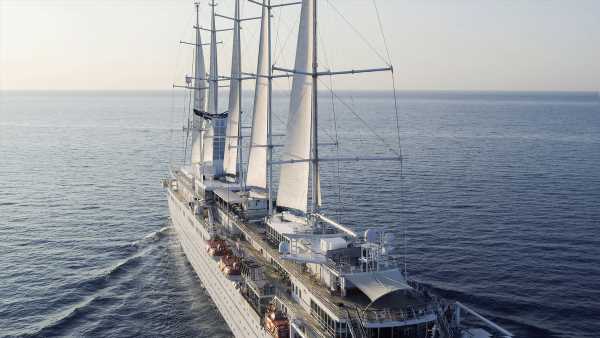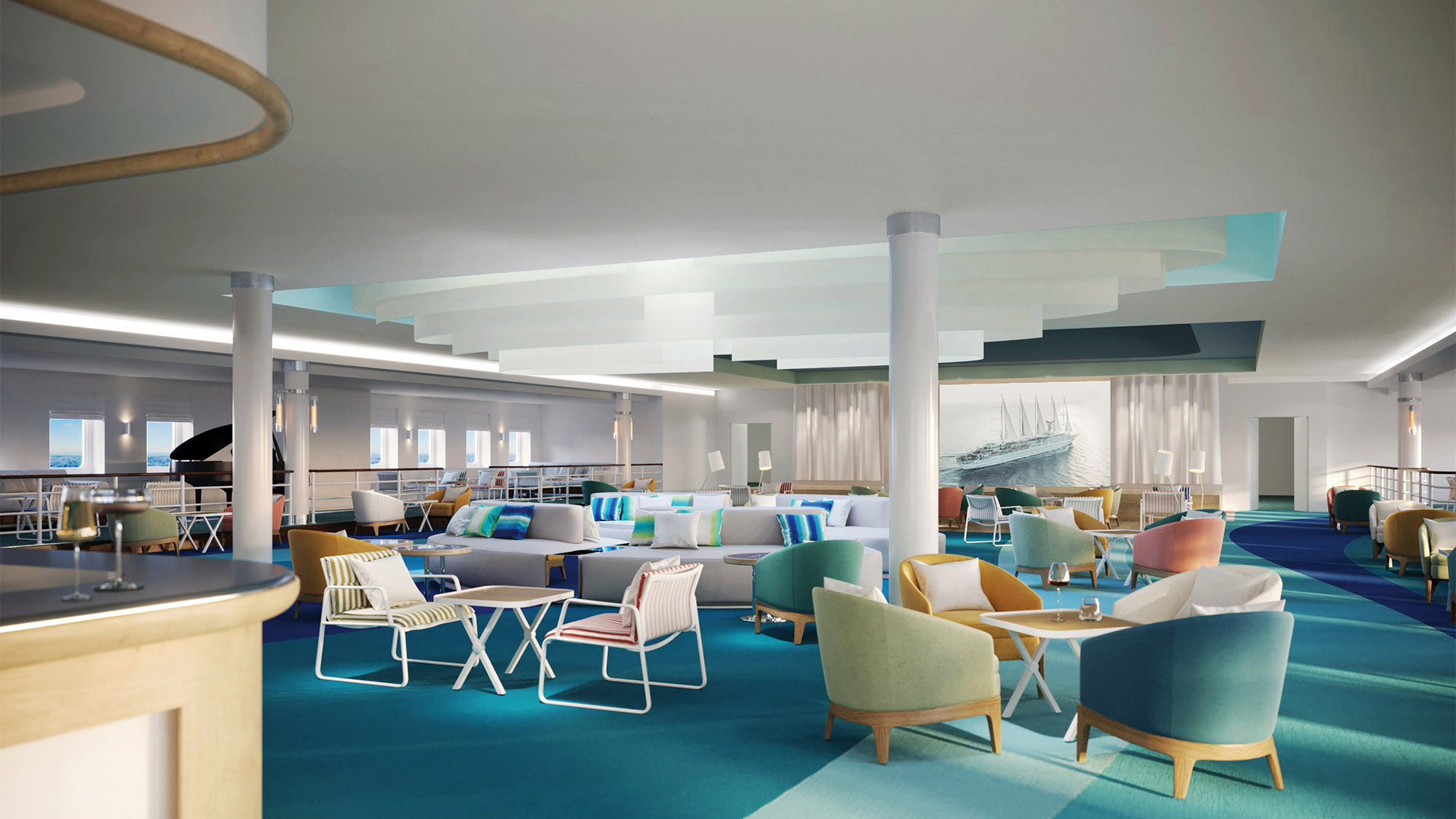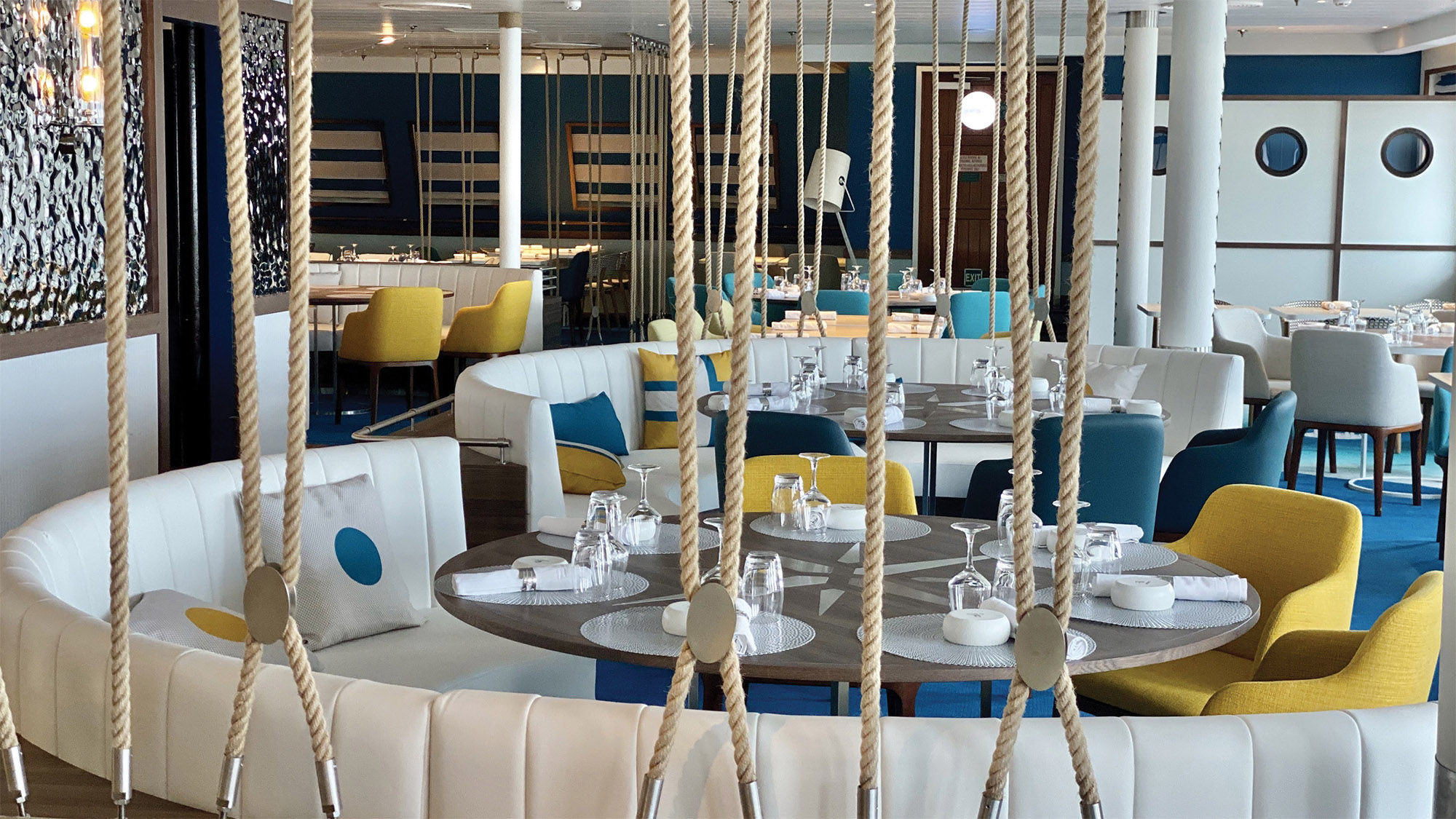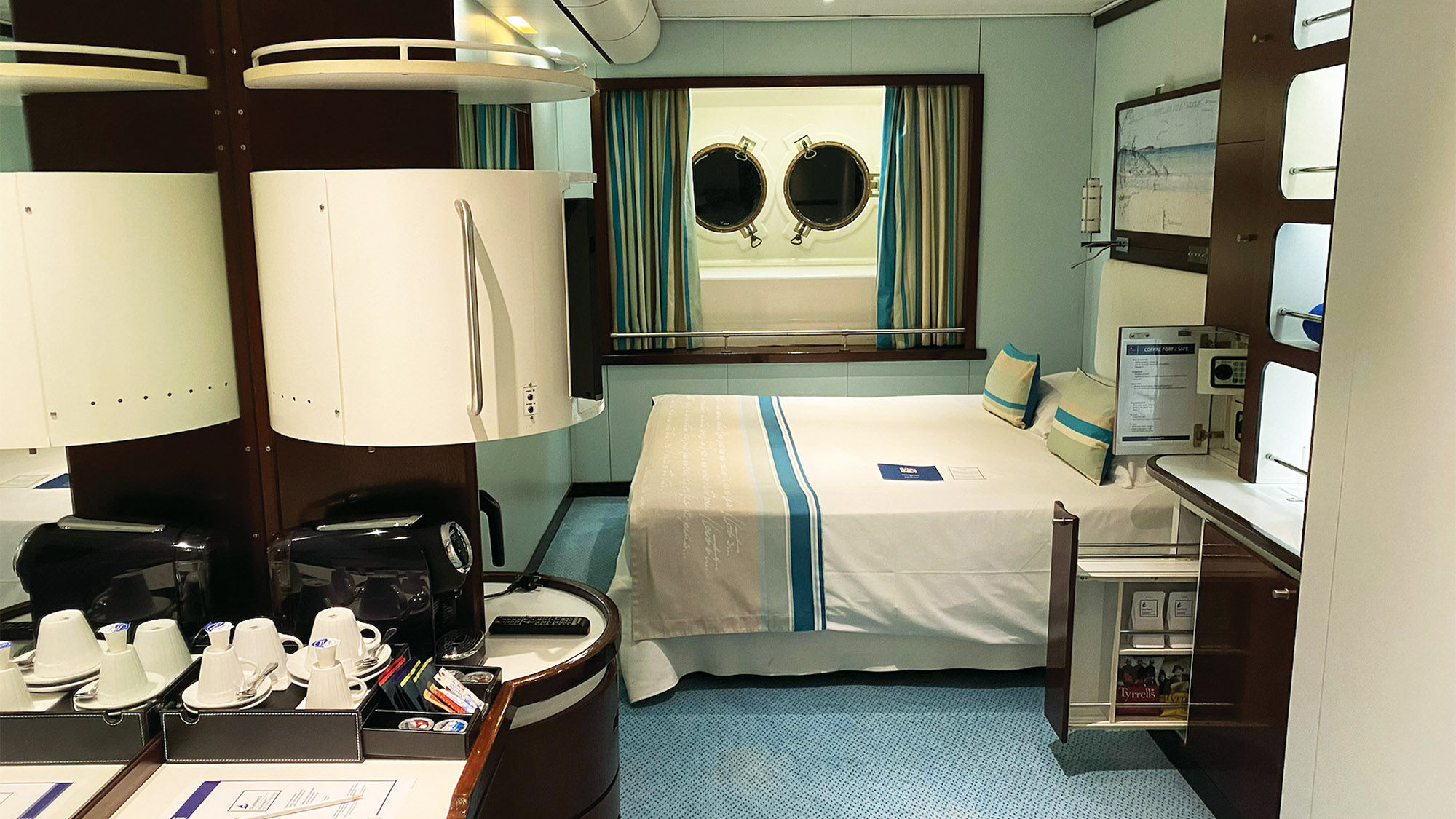
It’s difficult not to get swept up in the romanticism of a masted sailing ship.
As I sat at the bow of a tender cutting its way toward the Club Med 2 from Tortola in the British Virgin Islands just after nightfall, I was struck by the ship’s five regal masts and began imagining what it must be like to sail a ship relying on wind alone.
While this 368-passenger ship isn’t powered solely by its sails, Club Med wants to keep that romanticism alive, and it stoked the fascination with nautical tools and imagery as inspiration for its $10.8 million refurbishment of the ship last year.
The Club Med 2 is the resort company’s only cruise ship and is seen by executives as a complement to its all-inclusive resort products. Club Med launched the ship in 1992 (its sister ship, Club Med 1, is now Windstar’s Wind Surf) and first refurbished it in 2008. This latest renovation, finished in December, was intended to refresh the ship following the pandemic to keep up with the standards of affluent customers, said Carolyne Doyon, CEO of Club Med North America. The brand’s ideal customers, she added, are active, affluent couples, families and cruisers looking for something different as well as corporate groups.
The ship, which Club Med contends is one of the largest sailing vessels in the world, is small enough at 15 gross tons and has a shallow enough draft to visit smaller ports that large ships can’t access. The ship has been welcomed in places like Venice’s historical center and Virgin Gorda in the British Virgin Islands. The ship is sailed largely by Europeans and, being part of a French company, has a strong French vibe in design and culture, although executives want to make the ship more attractive internationally, including among North Americans.
Restaurants, lounge areas redone
The changes from its latest refurbishment largely reinvent the ship’s common spaces with floor-to-ceiling overhauls of its restaurants and lounge areas. The goal was a chic and contemporary look that incorporates new textures to resemble the sea, fabrics that look like sails and nautical tools to create designs in fresh ways.
For instance, guests walking into the Monte Carlo restaurant will first notice a large glass lens with gentle rings of light, which was inspired by a lighthouse. This lens is a focal piece in the restaurant that stands out most at night and is visible from half of the establishment.
Further into the restaurant, which is the ship’s sole a la carte dining venue, a dimpled silver wall reflects light from both outside and inside. Windows on either side of the ship provide opportunities for light to bounce off that shiny wall, mimicking the texture of the rippling surface of the ocean. Rounded white couches and chairs in yellow or various shades of blue surround large round tables with a central design akin to a compass.
The Monte Carlo and other refreshed areas were imagined by Sophie Jacqmin, a French designer who has created spaces in restaurants, hotels and several Club Med resorts.
The redesign was inspired by navigation, she said, using a mix of antique pieces and new takes on the ocean experience. For instance, layers of white cloth suspended from the ceiling create an oblong focal point in the Yacht Club, putting a twist on the idea of a traditional chandelier. The piece is inspired by the wind in the sails, Jacqmin said.
The Saint Tropez restaurant, home to a buffet with a variety of dishes including vegan options, was also redesigned to embrace the nautical theme. The space uses thick lines of rope throughout as both decor and to separate spaces. The ropes provide an open, airy feel throughout the restaurant while creating an illusion of privacy between tables and helping to facilitate foot traffic to and from the buffet.
Small changes
While some parts of the ship received a face-lift, the staterooms were largely left untouched. The cabins, which all have portholes, feel like a step back in time: The bathroom door is rounded like I imagined airtight ship doors might have been 30 years ago, with the shower and toilet spaces shaped like cylinders. In the cabin, a swiveling shelf holds a small television, and a thin drawer holds a treasure trove of snacks like chips and nuts.
The bedding, pillows, mattresses and linens appeared ready for an upgrade. Although I snoozed soundly, several members of the press on this sailing complained of difficult sleep. The staterooms were last updated during the previous renovation in the late aughts, according to the line.
The one new element introduced to the staterooms during the refurbishment was the addition of USB ports next to the bed.
Other changes on the ship were small, like quieter equipment in the gym to reduce the noise infiltrating the four treatment rooms in the spa below.
Club Med also replaced the sails. The old ones have been repurposed into small bags the size of a clutch purse, given as gifts on this sailing, which will be sold along with other products made from the sails in the onboard store this summer. Along with new sails are eight refurbished teak decks. A fun fact: The ship has almost as many square feet of sails as it has deck space.
While the sails give the ship a certain wow factor, they also help save energy. They are used every day except during inclement weather, reducing energy use daily by about 20%, according to the ship’s captain. And on a windy day, that energy savings can grow to as much as 30%, he said.
Source: Read Full Article












